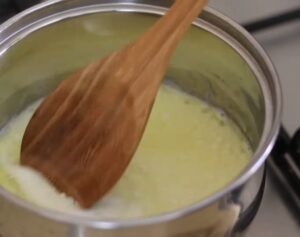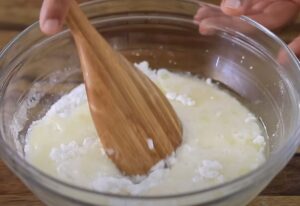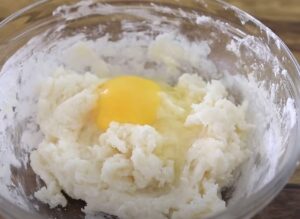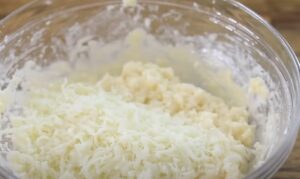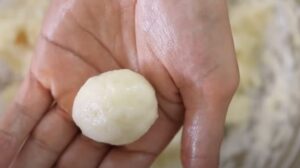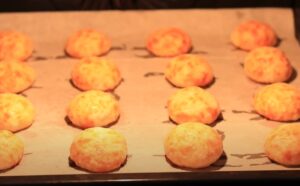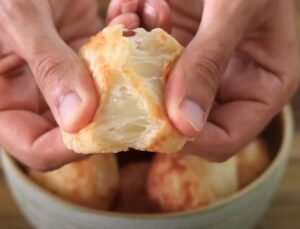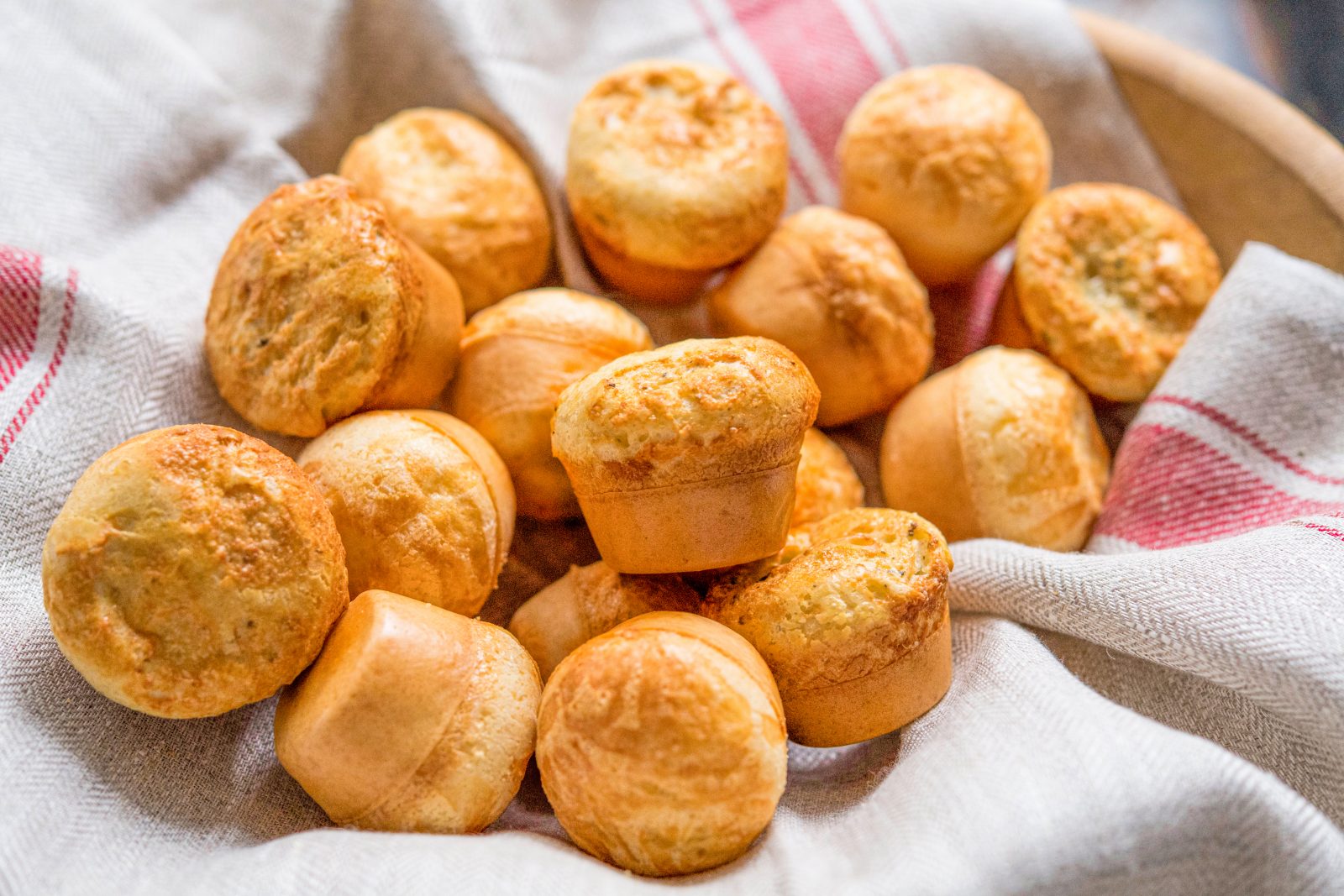
Over the last month, I’ve been exploring the rich and diverse flavors of Brazilian cuisine. It’s been a whirlwind of flavors, but I knew there was one essential item I still had to try: Pão de Queijo.
Join me as we experience this delicious, cheesy goodness together in our own kitchens. You’re going to love it!
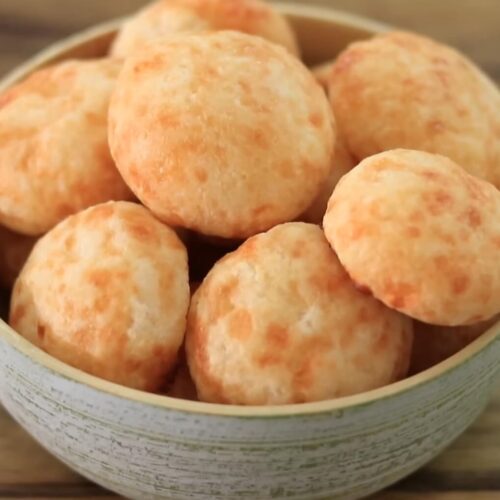
Pão de Queijo Recipe
Equipment
- Medium saucepan
- Whisk
- Large mixing bowl
- Wooden spoon
- Baking sheet
- Parchment Paper
- Ice cream scoop or tablespoon measure
Ingredients
- 1 cup Whole milk
- ½ cups Vegetable oil
- 1 tsp Salt
- 2 cups Tapioca flour
- 2 whole Large eggs
- 1½ cups Grated cheese mix of Parmesan and mozzarella works best
- Extra oil or butter for greasing the baking sheet
Instructions
- Preheat the oven: Set your oven to 375°F (190°C). Line a baking sheet with parchment paper or lightly grease it with oil or butter to prevent sticking.
- Heat the liquid ingredients: In a medium saucepan, combine the milk, oil, and salt. Bring the mixture to a gentle boil over medium heat, stirring occasionally. As soon as it starts to bubble, remove the pan from the heat.
- Add the tapioca flour: Pour the hot liquid mixture into a large bowl containing the tapioca flour. Stir well with a wooden spoon. The dough will be thick, sticky, and gelatinous at this point—this is perfectly normal.
- Incorporate the eggs: Let the dough cool slightly, just enough to handle. Add the eggs one at a time, mixing well between each addition. The dough will look slippery and sticky, but keep mixing until everything comes together.
- Add the cheese: Fold in the grated cheese and mix until fully incorporated. The dough will be thick but pliable and slightly stretchy.
- Shape the dough: Use an ice cream scoop or a tablespoon to form small balls of dough, about the size of a golf ball. Place them on the prepared baking sheet, leaving some space between each piece as they will expand during baking.
- Bake: Place the baking sheet in the preheated oven and bake for 20-25 minutes, or until the tops are lightly golden and the Pão de Queijo have puffed up. The outside should be crispy, and the inside chewy and cheesy.
- Serve: Enjoy warm straight from the oven! Pão de Queijo is best eaten fresh but can be reheated in the oven or toaster.
Video
Notes
- Cheese Selection: Authentic recipes often use Minas cheese, but since it’s hard to find outside of Brazil, a combination of Parmesan and mozzarella creates a similar texture and flavor.
- Tapioca Flour: This is a must for the chewy texture. You can find it in most grocery stores or online. Do not substitute with regular flour.
- Storage: Store leftovers in an airtight container. To reheat, pop them in the oven for a few minutes to revive the crisp exterior.
- Freezing: Freeze the unbaked dough balls on a tray, then transfer to a zip-top bag. When ready to bake, place frozen dough balls directly in the oven (adding a few extra minutes to the baking time).
Variations of Pão de Queijo
While the classic recipe calls for simple ingredients like milk, eggs, tapioca flour, and cheese, there are plenty of exciting regional and personal twists you can try to make this cheese bread uniquely your own.
Selection of Cheese Can Make a Difference
The type of cheese you use can make a big difference in flavor and texture.
- Parmesan and Mozzarella: This is the most common combination for a perfect balance of saltiness and meltiness.
- Cheddar: Adds a sharp, tangy flavor and melts well for a gooey interior.
- Gruyère: Provides a nutty, slightly sweet taste for a more complex flavor profile.
- Feta: Crumbled feta adds a salty and tangy kick, though it may change the consistency slightly.
Herbs and Spices For the Right Taste
Fresh herbs or spices can elevate your Pão de Queijo to the next level.
- Rosemary or Thyme: Adds an earthy aroma that pairs well with the cheesy flavors.
- Garlic Powder or Onion Powder: Infuses a savory depth that makes the bread irresistible.
- Chili Flakes or Paprika: For a hint of heat, sprinkle in some spice to give the bread a bold twist.
And There Are Also Stuffed Versions
- With Cream Cheese: Pipe a dollop of cream cheese inside the dough before baking for an extra creamy surprise.
- With Sun-Dried Tomatoes: Add a burst of tangy and savory flavor by folding in chopped sun-dried tomatoes.
- With Ham and Cheese: For a heartier snack, tuck small pieces of ham and extra cheese inside the dough.
Why Tapioca Flour Is Essential?
Tapioca flour, also known as tapioca starch, is the secret ingredient that gives Pão de Queijo its unique, chewy texture.
- It is Gluten-Free: Tapioca flour is naturally free from gluten, making Pão de Queijo a fantastic alternative for those with gluten intolerance or anyone looking for a naturally gluten-free bread option.
- Gives That Elastic Texture: The cassava-derived starch gives the dough an elasticity that no other flour can replicate, resulting in the bread’s trademark chewiness.
- Crispy Outside, Chewy Inside: Tapioca flour creates a beautiful crust on the outside while keeping the inside soft and stretchy. This dual texture is what makes the bread so addictive.
- No Substitutes: Substituting with regular wheat flour or any other type of flour will alter the bread’s unique characteristics. It’s important to use authentic tapioca flour to achieve the right results.
Perfect Pairings for Pão de Queijo
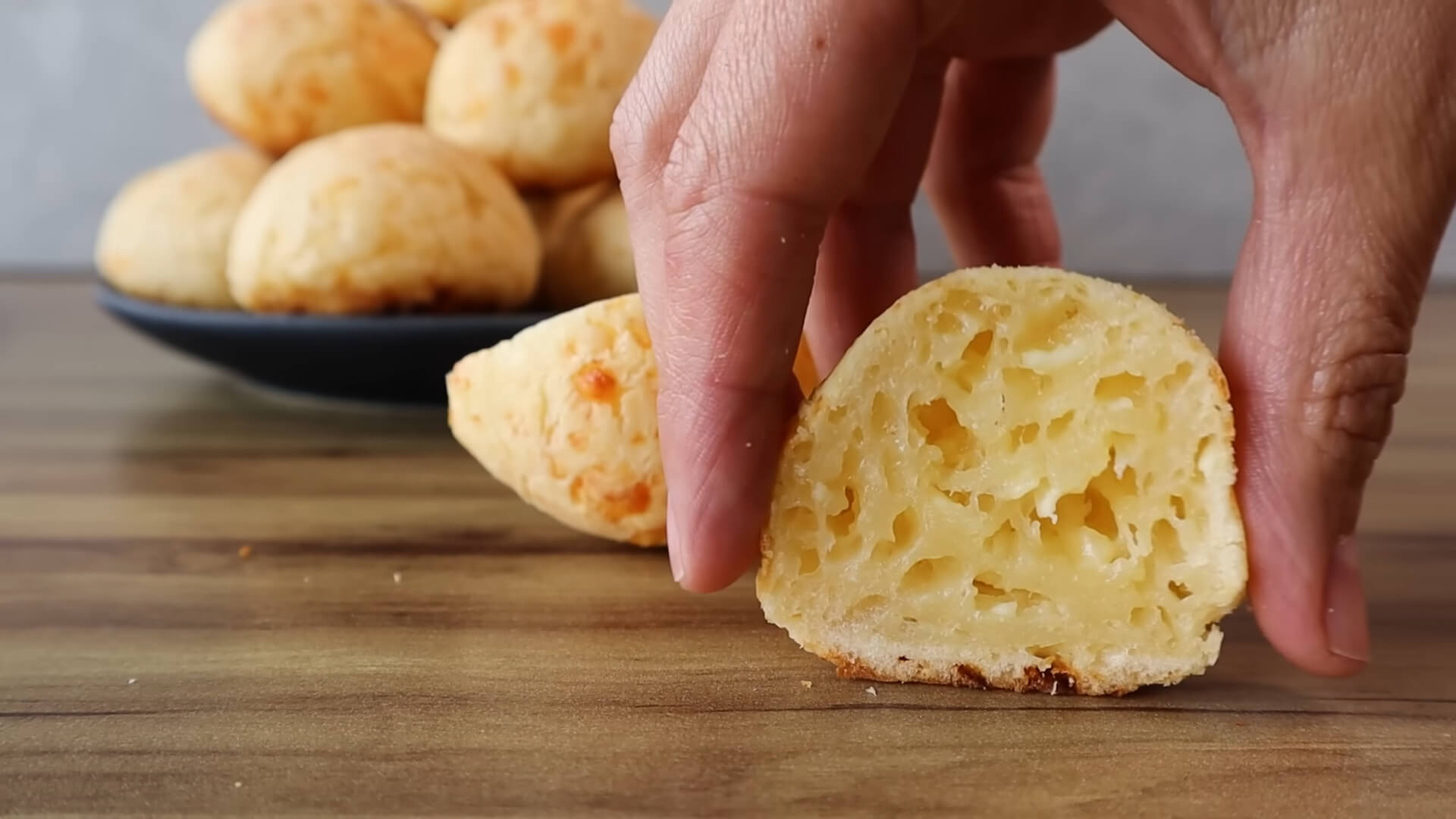
Pão de Queijo is delicious on its own, but pairing it with the right foods and drinks can turn it into a full culinary experience.
Traditional Brazilian Pairing
- Café com Leite: The combination of strong coffee with warm milk balances the savory richness of the cheese bread, making it a common breakfast or afternoon snack in Brazil.
Soups and Stews
- Caldo Verde: A traditional Portuguese soup made with potatoes, kale, and smoked sausage. The chewy cheese bread makes an excellent side to soak up the hearty broth.
- Black Bean Stew: A thick and flavorful black bean stew (similar to Feijoada) is enhanced with the cheesy, chewy goodness of Pão de Queijo.
Brunch Ideas
- Jams and Butters: Serve with a variety of fruit preserves, such as guava jam, or flavored butters like honey butter or herbed garlic butter for a gourmet brunch spread.
- Charcuterie Boards: Add Pão de Queijo to your charcuterie board alongside cured meats, olives, and fresh fruits. The bread acts as a perfect cheesy bite between savory and sweet elements.
Wine and Cheese
- Sparkling Wine: The bubbly freshness of sparkling wine complements the rich, cheesy flavors and cleanses the palate.
- White Wine: A crisp Sauvignon Blanc or a slightly sweet Riesling pairs beautifully with the bread’s salty cheese flavor.
Final Thoughts
Pão de Queijo is one of those recipes that brings instant comfort and a sense of adventure to your kitchen. It’s amazing how a few simple ingredients can transform into something so delicious and satisfying. Making these little cheese breads at home is a great way to experience the warmth of Brazilian culture, whether you’re serving them up as a quick snack, a brunch side, or a simple treat with your morning coffee.
Feel free to have fun experimenting—try different cheeses, add your favorite herbs, or even surprise yourself with a stuffed version. And if they don’t come out perfect the first time, don’t worry; part of the joy is in the process (and honestly, even the “imperfect” ones taste pretty great).


